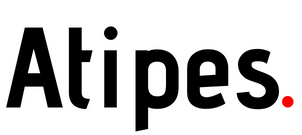1. Linear Regression
Linear regression is a method for finding a line that best fits the data points. Imagine you have a graph with a bunch of dots and you want to draw a line through them. Linear regression finds the line that gives the best predictions for the value of the dot based on its position on the graph.
For example, let’s say you want to predict the happiness of a person based on their income. You can plot the incomes of your sample of the population on the x-axis and each person’s happiness on the y-axis, and use linear regression to find the line that best fits the data. This line can then be used to make predictions about happiness based on income for new people.
Linear regression is really the ABC of the machine learning world – a very simplistic, but effective way to use an algorithm, easy to explain in a business environment. There’s a catch, though: not every dataset is compatible with it. Depending on several subtle characteristics of the data, linear regression might prove to be tricky, or even impossible, to implement.
Pros:
Easy to explain and understand to and by stakeholders
Simple to action in a business environment
Yields continuous predictions for a target variable
Applicable to smaller datasets
Easy maintenance
Cons:
Data might be incompatible with the model
When should you use Linear Regression in your marketing pipeline?
Even though we listed one disadvantage opposing 5 pros, it is a VERY significant one, so if you want to use this AI algorithm in marketing, first ask your local data scientist to examine your data. If you get the thumbs up, and possess small to medium volume of data, you could happily go ahead and predict various features on a customer-per-customer basis: number of products, LTV and average length of subscription as a few examples.
2. Random Forest
Random forests are a type of algorithm that builds multiple decision trees and combines their results to make a final prediction. Random forests are particularly useful for solving complex problems where the relationship between variables is not clear. The algorithm randomly selects a subset of the data and builds a decision tree based on that subset, then repeats the process many times to create an ensemble of trees. The final prediction is made by taking the average or majority vote of all the trees.
Random forests are often used in SaaS marketing to predict customer churn, target upsell opportunities, and improve customer lifetime value. They are also great for feature selection, which is the process of identifying the most important variables in a dataset. By identifying the most important variables, marketers can focus their efforts on the areas that will have the biggest impact. This is how AI marketing algorithms, and Random Forests in particular, reduce manual work in digital marketing significantly.
Using Random forest, we have managed to estimate the lifetime value of new customers with an accuracy of up to 95%, based on their features at sign up and their behavior within the first 7 days of subscription.
Pros:
Easy to visualize to stakeholders
Built-in mechanisms to avoid overfitting (letting the prediction for new instances fall too inline with the existing data)
Applicable both as a regression (yielding continuous results as predictions) and classification (sorting results into classes) model, depending on the business needs
Cons:
Computationally heavy
Not accurate on smaller datasets
When should you use Random Forest in your marketing pipeline?
Random forest is often used in SaaS marketing to predict customer churn, target upsell opportunities, and improve customer lifetime value. It is also great for feature selection, which is the process of identifying the most important variables in a dataset.
3. K-means clustering
K-means clustering is a machine learning algorithm that is used for grouping similar data points together into clusters. The “k” in k-means refers to the number of clusters you want to divide your data into.Imagine you have a group of people and you want to divide them into smaller groups based on their interests. You might ask each person what they like to do and then group people who have similar interests together. This is similar to what k-means clustering does, but it uses mathematical calculations instead of human decision making.
To use k-means clustering, you start by selecting random points to be the “centroids” of your clusters. Then, each data point is assigned to the closest centroid. The centroids are then updated to the average of all the data points in their cluster, and the process is repeated until the centroids no longer move. The final result is k clusters, each containing data points that are similar to each other.
Pros:
Quick and efficient
Unsupervised learning algorithm – yields results without a target variable, set in advance
Good scalability with large volumes of data
Cons:
Suboptimal when working with outliers
Difficult to interpret
When to use K-means clustering in your marketing pipeline?
K-means clustering can be a useful tool in a marketing pipeline when the goal is to understand and segment customer populations, gain insights into customer behavior and preferences, and optimize marketing efforts based on that information.
The algorithms used in marketing automation can definitely make the lives of SaaS marketers a lot easier and they have been around for a few years now. Check out what the future of marketing personalization and AI-powered journeys holds for us!
©Copyright 2023.All Rights Reserved.
Disclaimer : This advertisement and the information related to it are provided and maintained by the advertiser. Atipes.com is not responsible and can not guarantee the accuracy or completeness of this advertisement. Please note that every advertisement for rent or for sale should at a minimum, display the energy performance rating of the property. See our Flats and Housing Posting Rules for more information.
Avoid scams: Signs of fraud: wire transfer, money orders, cashier checks, payment via gift cards, shipping, escrow, "transaction protection", "guarantee". Be safe by dealing locally.

